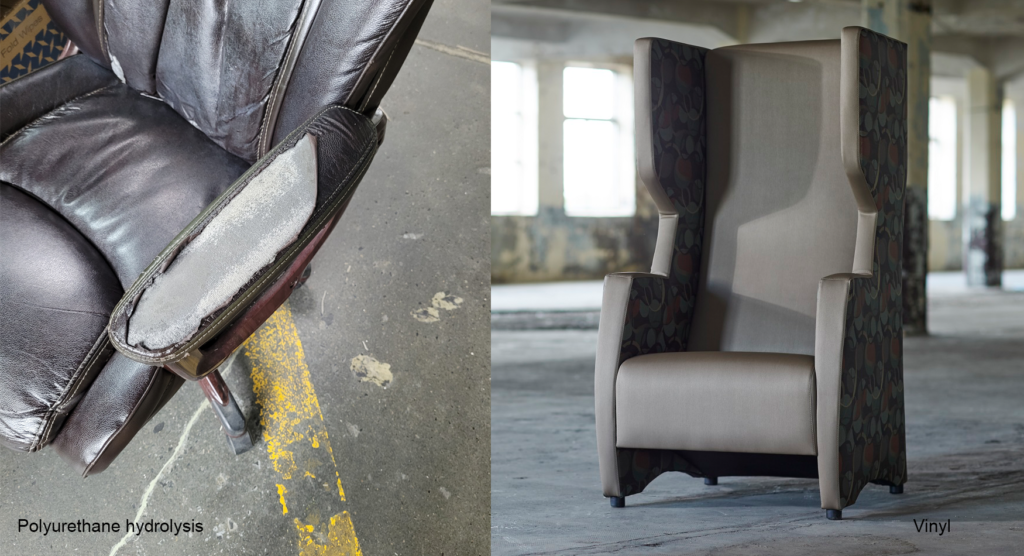 How do polyurethane coated fabrics and vinyl coated farbics differ? In our previous post, we examined several elements as it relates to vinyl and polyurethane, namely durability and cleanability. This week we tackle flame resistance and environmental impact.
How do polyurethane coated fabrics and vinyl coated farbics differ? In our previous post, we examined several elements as it relates to vinyl and polyurethane, namely durability and cleanability. This week we tackle flame resistance and environmental impact.
Flame Resistance Particularly in upholstery applications, flame resistance is an important property. Vinyl is inherently flame retardant, while polyurethane offers some flame resistance and needs added flame retardants to meet the same flame retardancy as vinyl.
Environmental Impact Sustainability has become an important consideration for many when choosing materials. And vinyl is a good choice for those looking to reduce their environmental impact. Not only does it last longer—meaning it’s less likely to be discarded—it’s also recyclable, routinely processed into roofing materials and other applications.
Polyurethane upholstery is made from cross linked plastics which means it cannot be remelted and reused. Some can theoretically be recycled after consumer use, but not as feasibly as vinyl, which can be remelted and reused.
Polyurethane is made from 100% crude oil. Vinyl is made from 50% table salt, so it uses less oil to make the same weight of material as polyurethanes. Plus Polyurethane uses isocyanates in their production, a material that is known to cause lung sensitivity and asthma.
When it comes to manufacturing the majority of Morbern’s vinyls are produced domestically so they save not only time, but also money in freight fees. Most polyurethanes are made overseas resulting in more green house gases being produced by the ocean vessels which are big contributors to CO2 emissions.
Vinyl is an attractive choice for a number of applications, from medical to marine, hospitality to home office, automotive and recreational vehicles. Next time you’re looking for an affordable, durable and cleanable upholstery covering, choose vinyl and experience how this long-lasting coated fabric performs over time.



